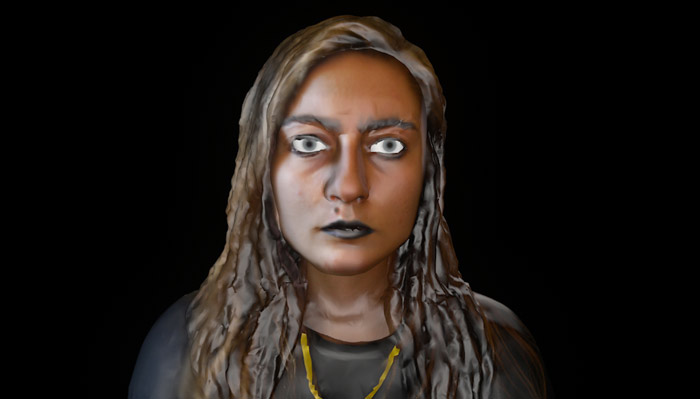Irena Jurek: Ok, so tell me which hotties you’re keeping an eye on this season.
Casey Jane Ellison: I keep to myself.
IJ: Your newest series, “What the F*shion,” parodies the fashion show genre, and deconstructs identity, status, and misogyny. Can you talk about what motivations led you to satirize fashion specifically?
CJE: I wanted to have a laugh with my generation about the way we are marketed to more than about fashion, specifically. I do think the fashion industry can be sexist, classist, and boring and so can any industry. But, I also think that the idea of the way people dress themselves is fun. It’s fun when people look cool and when they look insane.
IJ: I agree with you that any industry can be sexist and classist, but fashion more so than any other industry evokes notions of power, status, and body dismorphia. Before Twiggy came onto the scene almost fifty years ago, eating disorders were relatively obsolete. It seems to me that the fashion industry is the ideal vehicle for your subject matter.
CJE: I cannot attest to the history of eating disorders, but I disagree that their origin is Twiggy considering admen and corsets predate her. And I’ll add that my eating disorders are only a small part of my subject matter. I find that there is institutionalized sexism everywhere to be made fun of.
IJ: What is it about the way that your generation is marketed to that struck a chord with you?
CJE: The way my generation is marketed to struck a chord with me mostly because the way I’m marketed to doesn’t strike a chord with me. I’m alienated by most content that is supposed to be speaking directly to me or to my demographic. And I think that dynamic is heartbreaking and hilarious. I’m in love with the idea of exclaiming false platitudes to an audience that doesn’t relate and then being like, “Right, ladies?!” Especially when there are men in the audience. Right, ladies?!
IJ: Much of your work comments on the disparity between the textbook definition of the male gaze and the way that the actual objectification of women operates in every day life and pop culture. What are your thoughts on the inconsistency between the two?
CJE: I think it is part of our language to not say the thing that is actually happening, but to just keep talking. And honestly, I’m just a baby girl in a baby world, after all.
IJ: Your humor often seems to rely on drawing our attention to the thing that is happening that is not being said. In one episode, you give tips on “how to dress for men,” which seems to be in tune with the way that much of fashion is marketed.
CJE: “Girlz Dressing 4 Guyz” is not a thing. It seems like it could be a thing, but it’s actually not.
IJ: You mentioned that you remember the day that you became aware of the double standard and how largely patriarchal our society is. Could you describe that day?
CJE: I just remember feeling bloated as I stared up at the ceiling and thought, “Oh hell no.”
IJ: You use avatars, animations, and your actual self to create a public representation of your identity. Yet, your work often seems personal. Can you describe the way in which you take ownership of your image through the use of self-portraiture?
CJE: I self-objectify.
IJ: What made you decide to use the avatar in particular as a form to depict yourself?
CJE: The processes of creating my 3D avatars are intentionally convoluted and they’re very difficult to make and animate.
IJ: Why is having an intentionally convoluted avatar important to you, and why is the difficulty important to your process?
CJE: If they’re difficult to make, then they are difficult to recreate. My images and 3D models are visually encoded.
IJ: With the current emergence of so many social networking sites, where literally anyone can have a public platform to perform, your videos seem especially timely. How has social networking affected the current landscape and do you believe that the current saturation of social media is here to stay?
CJE: We will know the questions to those answers to those questions in 500 years, maybe.
IJ: You curate a continuing series called “Aboveground Animation,” that’s been held at Ramiken Crucible, The New Museum, and MOCA. How has your role as a curator influenced your views on art as well as your own art practice?
CJE: I founded Aboveground to build a community that my work and I can be a part of, also to propagate the work that I think is important.
IJ: How do you decide which work is important?
CJE: The animations presented in Aboveground are images, techniques, and concepts that shock me because I have never seen or realized them before. It’s important to me to help share that experience with as many people as I can.
IJ: Do you have any upcoming shows or projects that you are working on?
CJE: I’m performing stand up all the time and I’m making new 3D animations and 3D prints, robots and holograms. And yes, I’m being serious.
























